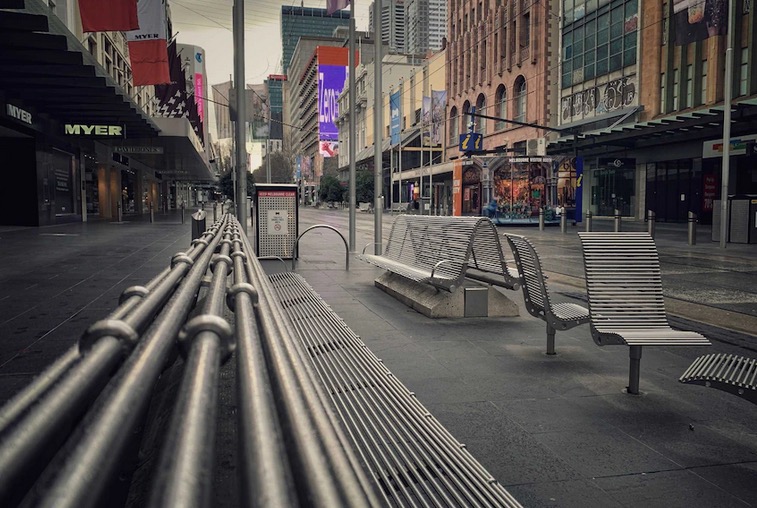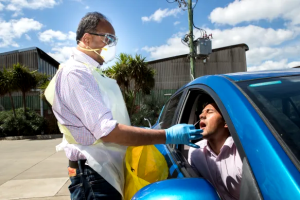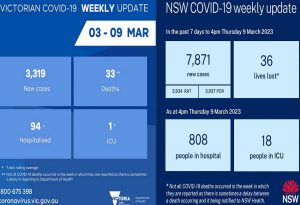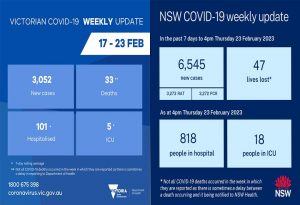Source: ABCnews
Victorians are divided over the state government’s expediting of roadmap freedoms, with businesses claiming health authorities are being too conservative with their reopening steps.
Under the latest easing of restrictions from 11:59pm on Thursday, up to 20 people will be allowed indoors at pubs, clubs and entertainment venues.
All Victorians will also be allowed up to 10 people including dependents at their home for a visit.
Despite the increase in density limits for hospitality venues and the allowance of household visitors, restrictions on retail shopping have not changed.
Retail businesses will only be able to reopen once the state reaches 80 per cent vaccination for all Victorians over 16.
Australian Industry Group’s Tim Piper said tying the return of retail to the 80 per cent vaccination milestone was the wrong decision.
“It’s causing business great consternation. It seems like the 80 per cent vaccination figure that we’re pursuing is a bit like a lifebuoy,” Mr Piper said.
“We’re leading into Christmas. It’s a really important time for business, it’s an especially important time for retailers. Every day matters for businesses.”
Mr Piper said the government should consider earlier freedoms for businesses in lockdown.
“We don’t need to get to that stage before we can make changes. Perhaps we can be looking at 78 per cent, or 76 per cent depending on what events are coming around.”
Business owners disappointed by roadmap update
The Chapel Street Precinct Association’s Matt Lanigan said many of the measures announced on Sunday were “tokenistic at best”.
“It’s great to have some hope in the community, but there’s also a lot of confusion amongst the different industries,” Mr Lanigan said.
He said many retailers were “frustrated and angry” about their inability to open and said small businesses in Melbourne had been ignored in the decision-making process.
“To be honest, the language coming out of the government has been disgraceful,” he said.
“It’s divisive every time there’s a press conference. It’s like, ‘You can do this and you can’t do this’. But you have no say. The consultation with business is non-existent.”
Fit With Her gym owner Marni Nicole said the latest round of lockdown easing was more symbolic than helpful for her business.
“This first lot of restriction easing doesn’t make much of difference to us at all,” she said.
“Other than saying that if these restrictions are easing sooner, then fingers crossed the next lot will ease sooner. That’s really all it means for us, there’s nothing tangible.”
Like retail, gyms are also slated to remain closed until Victoria reaches 80 per cent vaccination.
Premier Daniel Andrews said that while the government tried to loosen restrictions as much as possible, some businesses were too much of a COVID risk to allow to open.
“We’ve tried to be balanced, we’ve tried to be as fair as possible,” Mr Andrews said.
“Wherever you draw lines, whenever you write lists, there will always be some people who are on the wrong side of the line or not on the list.”
Health system braces for increased workload
Australian Nursing and Midwifery Federation Victorian branch secretary Lisa Fitzpatrick said the healthcare sector was worried about the effect loosened restrictions would have on the hospital system.
“I think people are very anxious in relation to starting a shift and seeing the influx of patients that come,” Ms Fitzpatrick said.
“Personally, my preference would be that we take very, very cautious steps.”
The expedited roadmap will bring freedoms four days sooner than originally indicated, with the allowance of household visitors and increased capacity at hospitality venues added to the 70 per cent milestone.
“We still want Victorians to be very cautious, people who are over should be double-vaccinated,” she said.
“With any freedoms comes responsibility, and we still don’t want to see people unvaccinated and unnecessarily ending up in our emergency departments.”
Epidemiologist Catherine Bennett said while there were risks to opening up, the loosening of restrictions were necessary for the state to move forward.
“I’ve always thought that we have to navigate the road down the middle. Sometimes you have to take those steps to know where you’re going,” Professor Bennett said.
“Allowing people into the home, that is a big step. But so far we’re seeing that play out in New South Wales, we’re watching that very closely.
“So I do think it’s balanced but at the same time, we’re watching closely all the time how we’re progressing.”
Chief Health Officer Brett Sutton said health authorities had tried their hardest to balance health and safety with economic concerns.
“I never come out of those recommendations with a sense that there’s absolute clarity that it’s absolutely right,” Professor Sutton said.
“But I think we’ve always tried to tread a path that balances those competing issues.”












